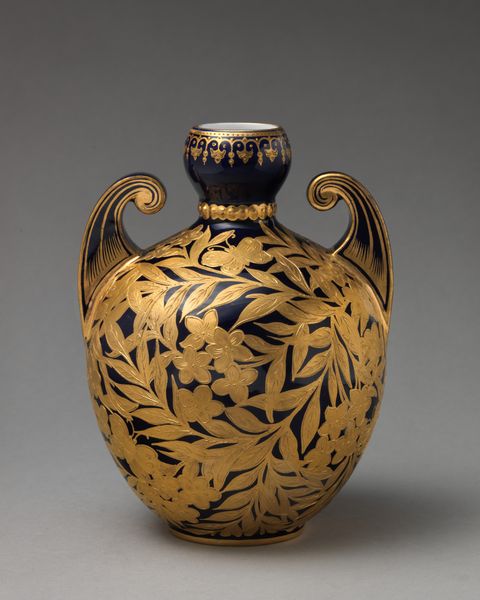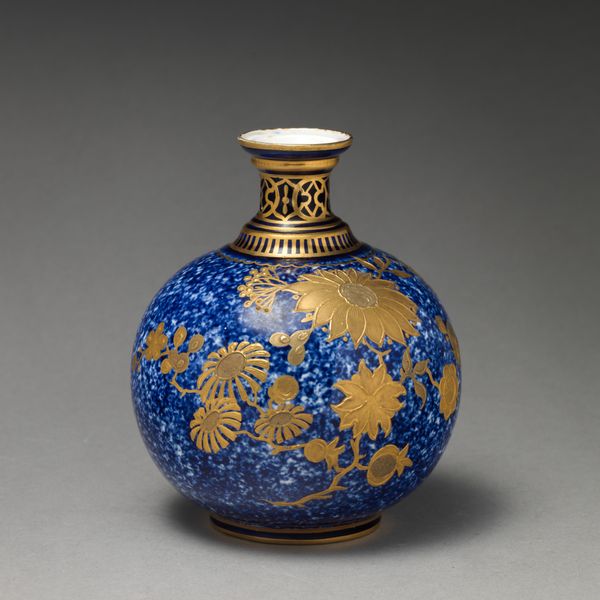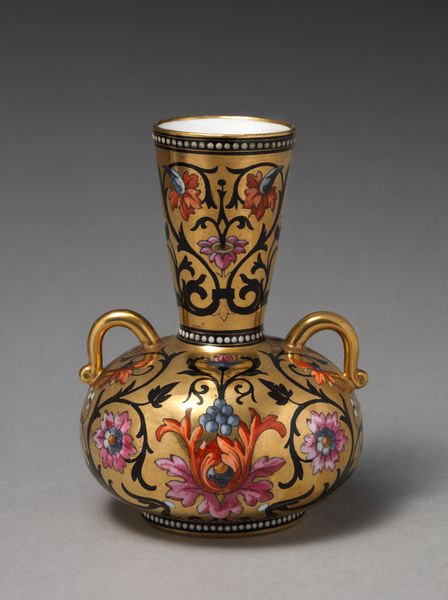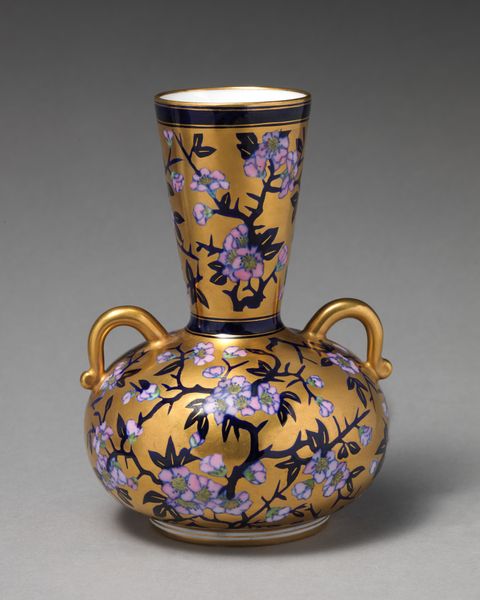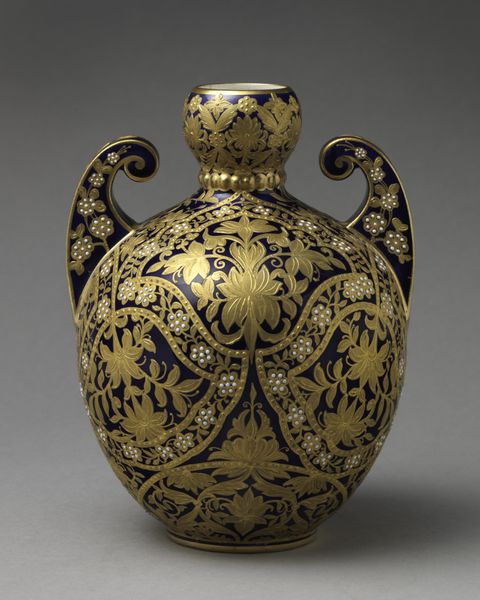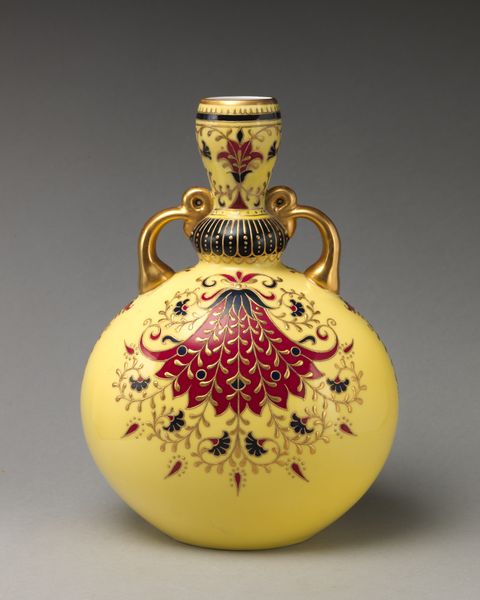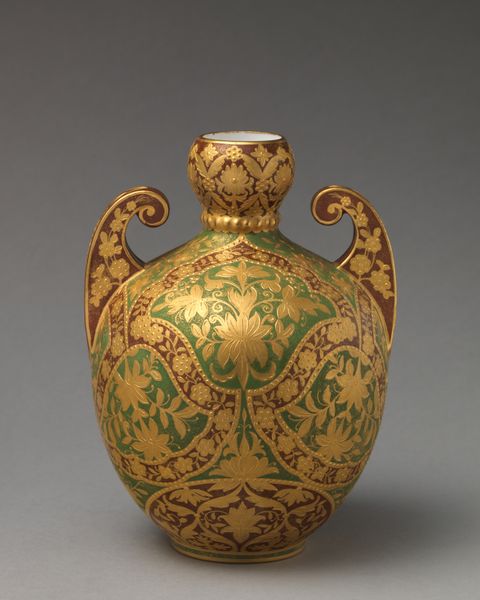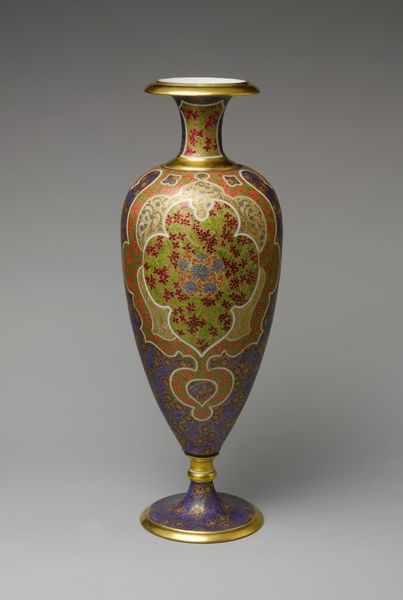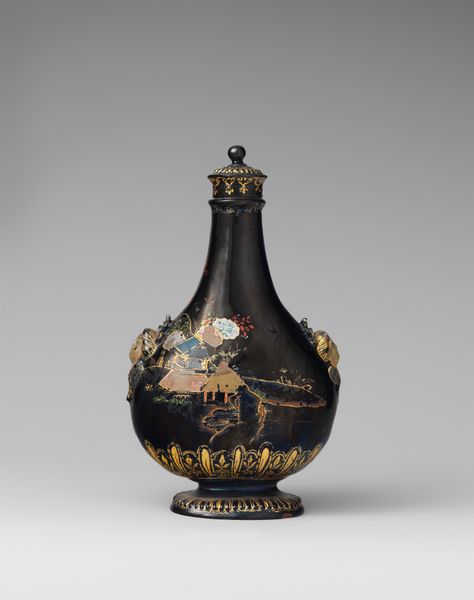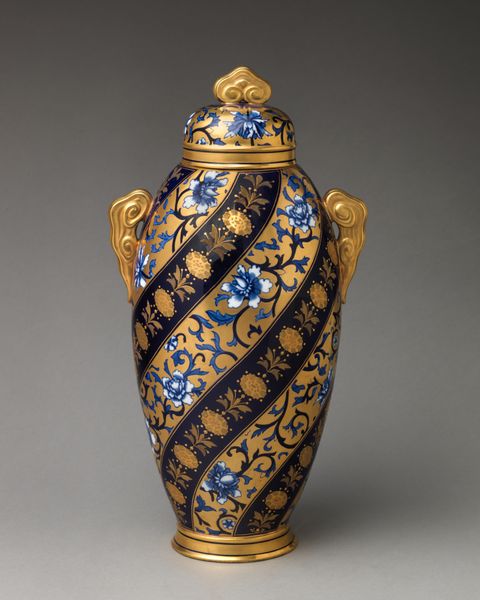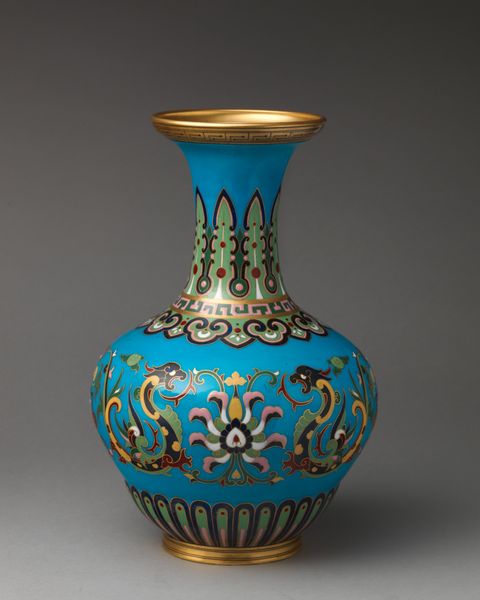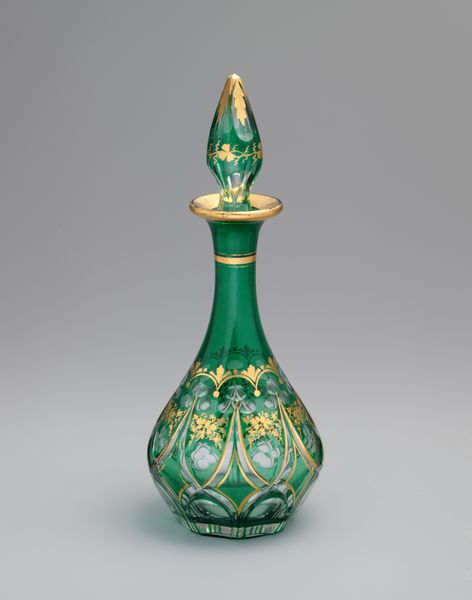
ceramic, porcelain, sculpture
#
ceramic
#
porcelain
#
sculpture
#
decorative-art
Dimensions: confirmed: 4 5/8 × 2 3/4 × 2 3/4 in. (11.7 × 7 × 7 cm)
Copyright: Public Domain
Editor: We're looking at a ceramic bottle vase with a stopper made by Crown Derby in 1862. The porcelain is a deep cobalt blue, embellished with elaborate gilding. It feels quite luxurious, almost like something from a royal court. What story does this object tell? Curator: It’s tempting to romanticize it as simply opulent, but we must consider the socio-political backdrop. In the 1860s, mass production was transforming the decorative arts. Objects like this, displayed in museums and international exhibitions, weren't just beautiful; they represented Britain's industrial and imperial power. Look at the detailed gilding – how does it echo the stylistic appropriation from colonized regions that was prevalent at that time? Editor: I see what you mean. The gold designs, with their floral and swirling motifs, do have an exotic feel. Was this intentional, a kind of visual branding for the Empire? Curator: Precisely. Crown Derby, and similar manufacturers, catered to an aspirational middle class eager to emulate aristocratic taste. Displaying these objects signaled not just wealth but also participation in Britain's global reach. The vase is thus caught in a network of class, aspiration, colonialism, and mass production. Does understanding this background shift your impression? Editor: It definitely adds layers of complexity. It's not just pretty anymore. It represents power, both economic and political, made tangible in porcelain and gold. Curator: And in considering those forces at work, we can better analyze the narratives art tells. Editor: That makes me see how an object can become a document of its time. Curator: Indeed. Material culture reveals a lot about how society operates.
Comments
No comments
Be the first to comment and join the conversation on the ultimate creative platform.
